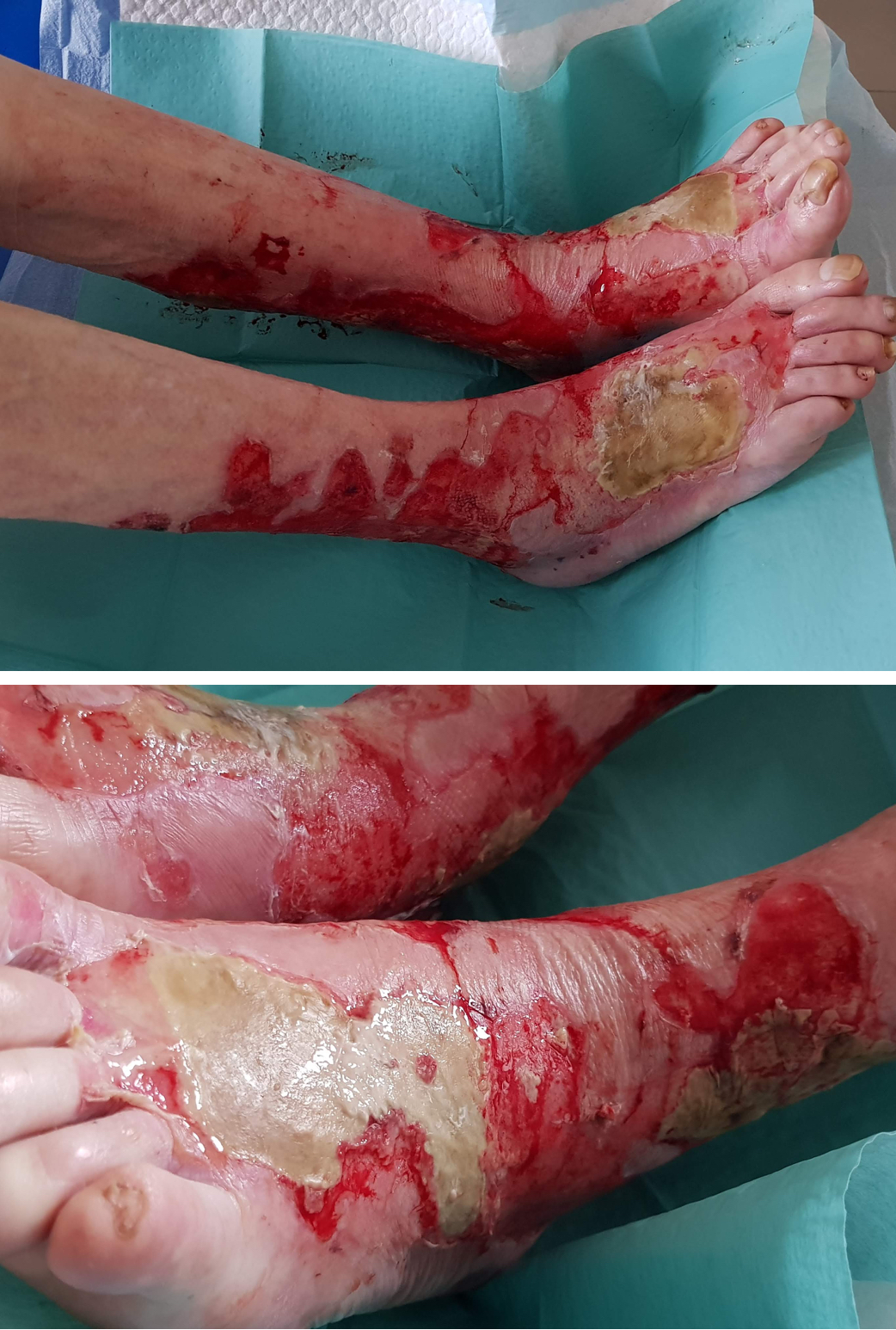INTRODUCTION
Pyoderma gangrenosum (PG) is a rare disease characterized by an ulcerative and inflammatory skin necrosis, that typically affects the lower extremities and starts with papules or pustules that evolve into painful and rapidly expanding ulcers.
1 A set of diagnostic criteria have been recently proposed.
2 In up to 50% of cases, PG is a manifestation of other systemic diseases such as inflammatory bowel disease, rheumatoid arthritis, leukemia and plasma cell dyscrasias.
1 There is a rarer association with solid malignancies and in the majority of cases the diagnosis of PG precedes the tumor diagnosis.
3CASE DESCRIPTION
We present the case of an 88 year-old woman, with a history of hypertension, that presented with bilateral lower extremity skin lesions that started as small pruritic and painful papules that ulcerated and rapidly expanded over the course of 3 days (Figure 1). There was no history of trauma, fever or evidence of infection. Rheumatoid factor, as well as anti-nuclear, anti-neutrophil cytoplasmic and anti-phospholipid antibodies were negative. There was no evidence of arterial or venous vascular disease. Incisional and ulcer border skin biopsy showed ulceration with an nonspecific lymphocytic infiltrate.The patient was started on 60 mg/day of prednisolone and the lesions responded well over the course of 2 weeks. However, with the tapering of this treatment the lesions tended to recur. An irregular 2 cm mass of the left breast was eventually diagnosed and the biopsy revealed a papillary carcinoma, luminal A (hormone receptor positive, HER-2 negative). The patient refused surgical treatment for breast cancer and only after starting hormonal palliative treatment with letrozole, almost 4 months after the initial diagnosis of PG, did the lower extremity lesions completely resolve and the withdrawal of corticosteroid treatment was possible. The PG lesions did not recur to this date.
Figura I

Anterior lower extremity ulcerative lesions at admission
BIBLIOGRAFIA
1. Ahn C, Negus D, Huang W. Pyoderma gangrenosum: a review of pathogenesis and treatment. Expert Review of Clinical Immunology; 2018 Feb 13;14(3):225–33.
2. Maverakis E, Ma C, Shinkai K, Fiorentino D, Callen JP, Wollina U, et al. Diagnostic Criteria of Ulcerative Pyoderma Gangrenosum. JAMA Dermatology. 2018 Apr 1;154(4):461.
3. Shah M, Sachdeva M, Gefri A, Jfri A. Paraneoplastic pyoderma gangrenosum in solid organ malignancy: a literature review. International Journal of Dermatology. 2019 Sep 12.


